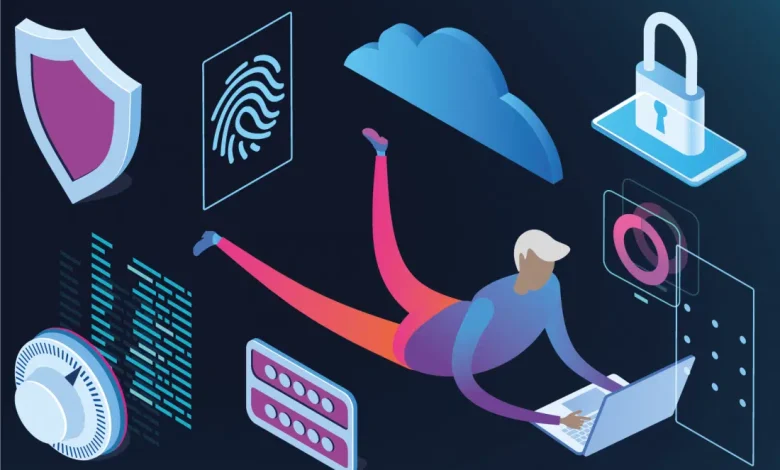
In the digital era we live in, mobile apps have become an essential element of our everyday routine, giving us access to convenience, entertainment, and productivity at the tip of our hands. Unfortunately, in the era of cybercrime and constant data breaching, one of the most important goals is to secure your mobile app and its integrity. AppSealing is a process that allows your app to stay safe from reverse engineering, any tampering, or piracy, and is crucial not only for protecting your intellectual property and users’ data. It is a difficult journey to embark on, however, and the many possible pitfalls might make you go astray. In this article, we will examine ten mistakes to avoid when ensuring your app is safe and secure, to make your app sealing process smooth and effective.
1. Neglecting app sealing altogether
Neglecting app sealing is perhaps the most significant mistake developers can make. Due to their confidence in the security of the code or the lack of belief that someone will target their application, developers frequently ignore the necessity to protect it. This is far from the case. Cybercriminals are waiting to exploit any existing flaw, and even the most inconsequential application can be compromised to obtain access to critical resources: user data, intellectual property, etc. Neglecting app sealing means leaving your success and your image behind, which can be devastating.
2. Underestimating the complexity of app sealing
App sealing is a complicated process that combines a profound knowledge of security principles, coding methods, and the newest threats. A significant number of developers do not attach due importance to this issue, believing that the simple obfuscation of the utility code or encryption can save the product. The truth is, app sealing is a course system, combining a number of ways from code obfuscation to anti-tamper protection and runtime application self-protection . Implementing these measures without the proper knowledge could lead to possible holes in the solution.
3. Failing to assess risks and threats
Before you start your app sealing adventure, make sure you perform a risk assessment and threat analysis. Although every app needs to be safeguarded in some ways, security measures depend on the app’s nature and functionality, the audience it is targeted at, and the data you process. Ignoring analyzing risks and threats may result in ineffective security measures or inadequate security, insecure to certain attacks or possibly neglecting the most sensitive areas that necessitate protection.
4. Choosing the wrong app sealing solution
The temptation to choose the cheapest solution, or the one your team is most familiar with, can be strong. But not all app sealing solutions are the same. Some provide limited protection, many may be too much for your app’s needs, adding complexity and impacting performance for no real benefit. Therefore, thoroughly research and evaluate multiple app sealing solutions. See how each one performs with key questions such as how effective is each solution, how well does it fit your app’s architecture, and what level of support and documentation is available.
5. Implementing app sealing too late
All in all, app sealing should be implemented ideally from the very beginning of the development. Trying to seal the app after the fact can be a cumbersome process riddled with errors. It is also possible that extensive code refactoring will be required, resulting in a number of potential security risks in the process as well as breaking functionality altogether. With integration thereof from the beginning, developers can ensure that there will be no vulnerable compilation processes or costly resealing from scratch.
6. Overlooking performance implications
On the flip side, when imperfectly implemented, sealing an app can prove to be a costly mistake that compromises security and performance, resulting in user frustration when using the app. While code obfuscation, encryption, and similar techniques secure an app against external threats, they may lead to an increase in resource consumption. This, in turn, translates to slow load times, excessive battery usage, lax security features, and, above all, a horrible user experience for your target audience. As stated earlier, it is vital that a balance is struck between robust security features and a high level of performance. You need to test and evaluate how different sealing techniques impact the actual or expected performance of your app, that is coding pattern, resource utilization, and performance considerations. Implement performance profiling and monitoring to detect performance issues and bottlenecks. It is also important not to overlook user experience, as they are more likely to abandon a highly secure app that performs poorly.
7. Neglecting regular updates and maintenance
Since the security environment is continuously changing, new threats and vulnerabilities frequently are discovered. Neglecting the need to update or maintain your app sealing, regardless of how it was done, would endanger your app owners and clients as soon as new attacks are found. It is thus advisable to set up regular scheduled updates to your app sealing platform, pay attention to security advisories, and correct anything that has changed.
8. Failing to educate and train developers
Your app should not be in peril of safety because you failed to teach and train developers. App sealing necessitates learning and relearning, for the hazards may alter. Your providers are not supposed to take credit for this fact because of your neglect. In a continuous theoretical and practical setting, you need to schedule training sessions from which developers will understand. Through the institutionalization of a culture of teamwork and open talks, information sharing may be encouraged . Equip your providers with the understanding and the capable-thinking mentality to detect and mitigate continuously developing hazards, elongating your app for safety from all cyber dangers.
9. Overlooking third-party libraries and dependencies
Lots of apps integrate third-party libraries and dependencies to accelerate the development process and build on existing features. Unfortunately, a high proportion of applications do not effectively test and secure third-party libraries and dependencies . Such an oversight may render efforts to seal an app null, with cybercriminals exploiting vulnerabilities in third-party libraries and dependencies to infiltrate your app or breach its security.
10. Neglecting testing and validation
Choosing to cut corners and implement app sealing without testing and validation is a costly mistake. If untested, security measures may not protect your app at all or could create new vulnerabilities or functionality issues. Ensure you have a robust testing and validation pipeline, from penetration testing and security audits to user acceptance testing, to ascertain the effectiveness and reliability of your app sealing solutions.
Conclusion
App sealing is a vital part of mobile app development and app security, securing both your intellectual property and user data as well as protecting your reputation. However, the app sealing journey can be dangerous territory for the unwary. When you avoid the ten errors listed in this guide, you considerably increase your odds of experiencing a trouble-free and high-quality sealing job, safeguarding your app against reverse engineering, tampering, and piracy.





